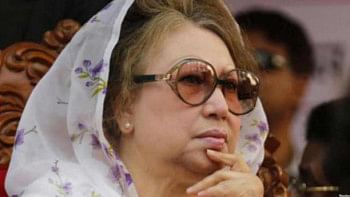America First is hurting China's business
The US economy has pulled ahead this year, extending a lengthy expansion with help from President Donald Trump's “America First” agenda and massive tax cuts, but upcoming data could illuminate the impact of his policies on global peers.
Trump is determined to rewrite global trade deals, particularly with China, the world's second-biggest economy behind the United States. He has slapped tariffs on more than half of over $500 billion in Chinese imports, for which China has retaliated.
Plans for new trade talks collapsed recently and both sides appear to be digging in for a long fight. That has cast a darker shadow over the outlook for the global economy, already showing signs of strain from a rampant US dollar that has sent emerging market currencies into retreat.
All 70 economists who answered an additional question in a Sept. 12-19 Reuters poll said the trade conflict between the world's top two economies is bad for US growth. They were also unanimous in saying the US-China trade war threatened the outlook for the euro zone.
Economic data in the coming week may give more solid evidence as to how China is faring.
“One eye will also be on China next week as markets attempt to assess the latest economic data for signs of any impact from trade disagreements with the US,” said Ryan Djajasaputra at Investec.
The calendar consists of purchasing managers' (PMI) surveys of services firms alongside trade and credit releases.
China's economic growth has been slowing and September data due on Oct. 12 is expected to show dollar-denominated exports rose 9.1 percent, slower than August's 9.8 percent increase, according to a preliminary Reuters poll.
On the same day, Beijing will publish its trade balance, including the politically sensitive surplus it has with the United States. The number could push Trump to turn up the heat on China if he thinks he is not winning the trade war.
“It seems likely that a US–China trade war will result in nearly all Chinese imports into the US facing 25 percent tariffs next year, with US exports to China also subject to higher tariffs,” economists at Credit Agricole told clients.
That could add to inflationary pressures, particularly in the United States, and so has implications for Federal Reserve policy.
The Fed raised interest rates late last month, its third rate hike this year, and is expected to follow that up with another increase before the end of December, taking the benchmark fed funds rate to 2.25-2.50 percent.
Medians in a Reuters poll showed only two hikes next year compared to three increases based on the Fed's own dot plots, but economists could be swayed into agreeing with the Fed if tariffs drive up inflation.
Rather than tightening, China is supporting its own economy with stimulus measures — including monetary, credit, fiscal and regulatory policy easing.
Policymakers have sought to bring financing costs down, boost lending to smaller businesses, cut taxes and fast-tracked more infrastructure projects. The central bank has cut banks' reserve requirement ratios three times this year to pump in liquidity.
“We expect fiscal policy to remain supportive. Monetary policy should also remain accommodative,” Credit Suisse economists told clients.

 For all latest news, follow The Daily Star's Google News channel.
For all latest news, follow The Daily Star's Google News channel. 



Comments